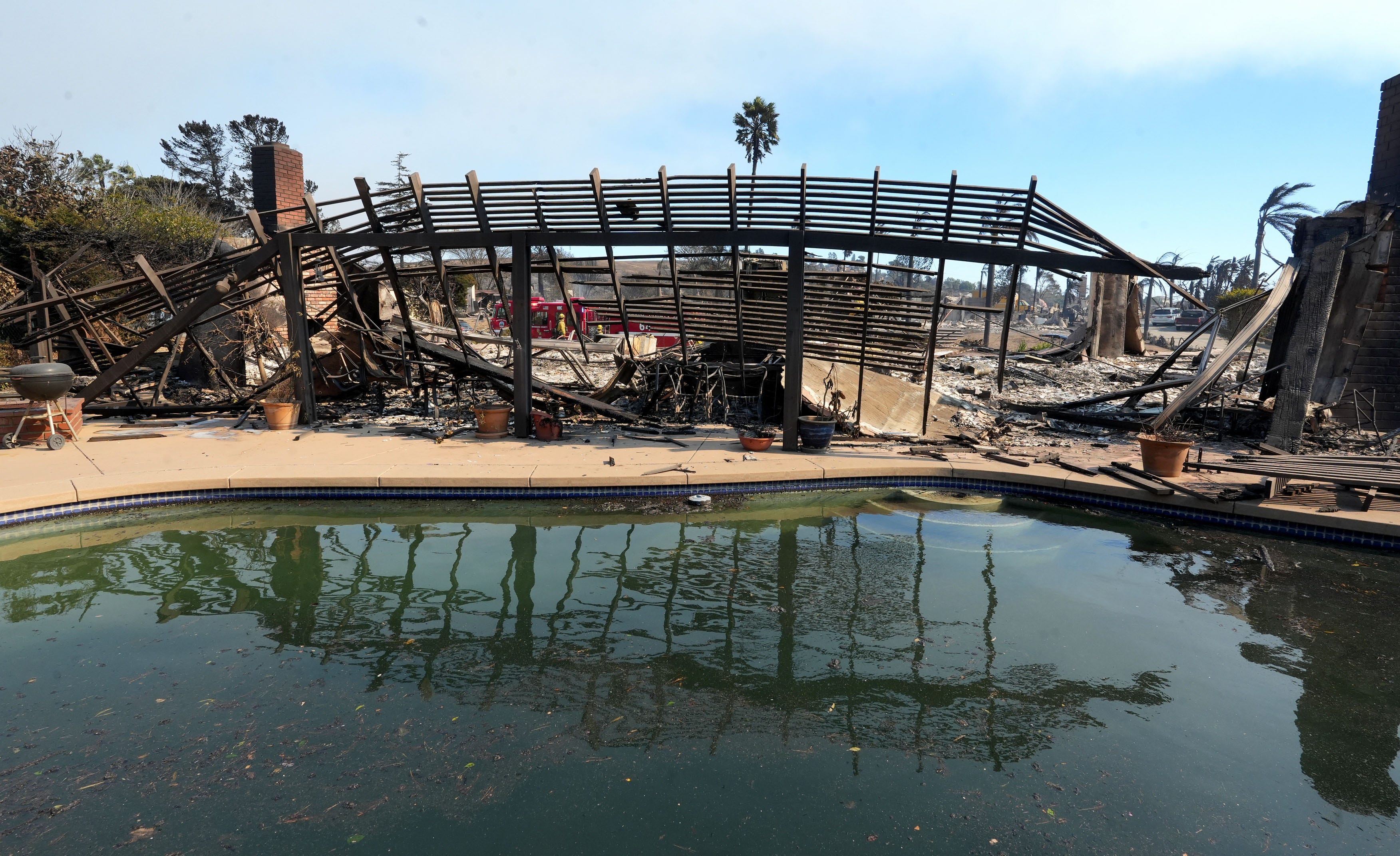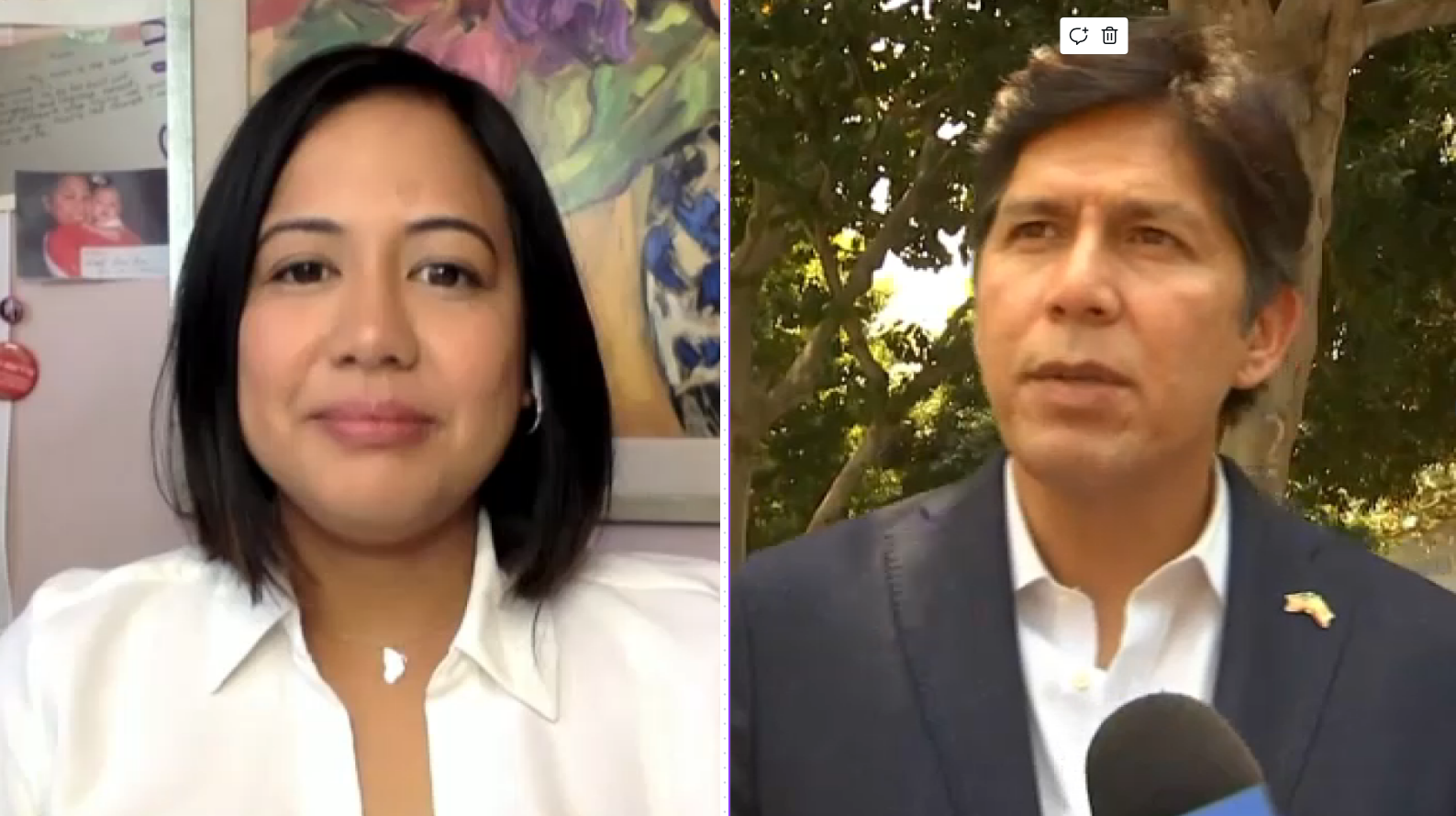Although the City Council voted over a year ago to tear down Parker Center, the former Los Angeles Police Department headquarters, AIDS Healthcare Foundation President Michael Weinstein and his supporters announced an effort Thursday to halt the wrecking ball and convert the building into a homeless shelter.
The City Council approved the demolition of Parker Center in March 2017 so it can be replaced with an office tower for city employees as part of a larger redevelopment plan for the Civic Center area, but Weinstein and several dozen people from two organizations supported by the AHF, the Coalition to Preserve LA and the Healthy Housing Foundation, said during a news conference outside Parker Center that they were organizing a ballot initiative asking voters to approve its conversion into a shelter.
The groups also want to rename the building the Tom Bradley Center after the former mayor who led the city from 1973 to 1993.
"Every time City Hall wants to give an exemption to a luxury developer, they scream NIMBY," Weinstein said. "Well this is in their backyard, so they can show leadership by doing something in their backyard."
The number of homeless in Los Angeles spiked by 20 percent last year to over 34,000, according to the results of the Greater Los Angeles Homeless Count, although the Los Angeles Homeless Services Authority recently said the numbers in the county were inflated by 2,746, and it is not yet clear how many of those were within the city of Los Angeles.
In response to the rise in homelessness the last few years, Mayor Eric Garcetti and other city leaders supported Measure HHH, a successful 2016 ballot initiative that aims to raise $1.2 billion for permanent supportive housing for the homeless. More recently Garcetti and the City Council have also put focus on temporary homeless shelters in the form of large tents and trailers and approved a $20 million plan to install them in each of the city's 15 districts.
HHH-funded units have proven to be costly and as high as $450,000 per unit, and a recent report from City Administrative Officer Richard Llewellyn estimated city will fall at least 4,000 units short of the goal of 10,000 new units if it stays on its current path.
News
Top news of the day
Weinstein and his supporters argued that the city should focus on adapting and reusing empty buildings such as stores, schools, hospitals, hotels, and government buildings, which he said would be cheaper than new construction. The Healthy Housing Foundation has bought at least two hotels in the last few months with the goal of converting them into housing for the homeless.
"Let's get real. We are not going to solve the problem of homelessness if we spend $450,000 per unit. That not just doesn't make sense," Weinstein said. "It's plum crazy, and it takes a long time. The reality is that the only solution is adaptive reuse."
A spokeswoman for Garcetti said the mayor had no comment, and City Councilman Jose Huizar did immediately respond to a request to comment. Huizar's district includes the Civic Center, and he led the proposal to demolish Parker Center. Huizar's district also includes Skid Row, where an estimated 2,000 homeless people are located, and the councilman has said he hopes to spend at least $20 million on temporary shelters there.
According to the city, Parker Center has asbestos contamination, but Weinstein said he met with Garcetti and offered to pay for the asbestos cleanup. He also estimates the building, which is located across the street from City Hall East and two blocks from City Hall, could house 732 beds for homeless people at half the cost of the city's $483 million plan for a new office tower needed for government employees.
The Coalition to Preserve LA was the driving force behind Measure S, a failed 2017 ballot initiative which would have imposed new restrictions on the construction of housing, shops and offices in Los Angeles. The group argued that rapid development in L.A. is driving up housing costs and making some of the foundation's patients homeless.
"They need to stop and think what they are doing. To tear down a building that would house 732 homeless people for a 10-year-old plan for a luxury office tower for city workers is not humanitarian, it's not smart, and it's really outrageous," said Jill Stewart, executive director of the Coalition to Preserve LA.
Although the city held numerous meetings on the fate of Parker Center, the Coalition to Preserve LA and Weinstein did not participate, and no organization or city leader put forward a major plan to use the building as a homeless shelter, as the focus of the discussions was on the need for more office space.
Weinstein was asked by reporters why he is bringing forward the shelter initiative more than a year after the city finalized the building's demolition, and why his organizations did not take part in the public meetings last year.
"I don't think the burden is on nonprofits to tell the city how to do its job," he said, and added that "there's 1,000 things and we can't be involved in them all."
When reminded that the demolition of Parker Center was only part of city's plan for the Civic Center redesign, Weinstein asked, "Why should people care about that?"
The debate over Parker Center's fate in 2017 was an emotionally charged one, even bringing Huizar to tears at one point. Much of the emotion was due to the building's connection to the LAPD's checkered past, as well as the fact that it used to be located on a key block in the Little Tokyo neighborhood which was seized by the city through eminent domain in the 1950s.
The building was originally known as the Police Facilities Building when it was built in the 1950s. In 1969, it was named after former Chief William H. Parker, the LAPD chief from 1950 until his death in 1966.
Allegations of corruption and institutional racism, along with abuse and discrimination against the black community, are part of Parker's legacy.
Despite the negative history, the Los Angeles Conservancy had argued for the preservation of the building, with supporters saying the city cannot preserve only positive history. Weinstein repeated a similar argument.
Weinstein also argued that rebranding the building after Bradley, who is considered an African American icon to many Angelenos, would help forge a new identity for the center.
The effort to create a city ballot initiative would cost around $100,000 and require about 65,000 signatures from registered voters, Weinstein said. The city is not due to hold another election until 2020, but Weinstein said the city could call a special election for the ballot measure if it gets approved. He also conceded the city had the legal right to tear the building down even if the ballot measure is approved, but argued the optics would not be in the favor of city leaders to do so as they grapple with the growing homeless crisis.
In voting for its removal in 2017, the City Council decided against naming Parker Center a historic-cultural monument, despite the Cultural Heritage Commission recommending the move.
Parker Center, which opened in the 1950s, has been mostly empty since 2009 when the LAPD moved to a new building several blocks away. It was designed by Welton Becket, who also designed the Capitol Records building, Music Center and Cinerama Dome.



